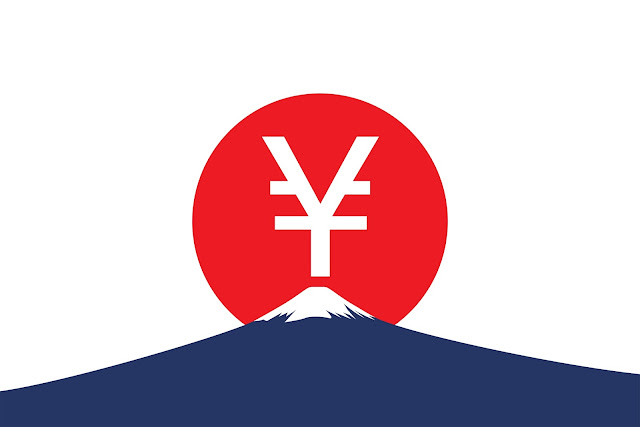It's all relative ....In Tokyo, a 5 basis point move in yields is BIG news
ref :- "Bank of Japan Offers Unlimited Bond Buying After Yields Jump"
Doesn't sound that dramatic, does it ? And in most other markets, it wouldn't be. But this is Japan remember, where the 10yr Government bond yield has been lolling around 0.03% for some time, and which closed on Friday at a touch under 0.04%. This morning it hit 0.09%, which may not sound exactly stratospheric to many but in percentage terms represents a veritable surge. Investors have become unaccustomed to this type of thing ever since the Bank of Japan introduced measures to take control of the yield curve back in 2016, and to keep the 10yr yield at or close to zero.
One can understand the desire to manage the yield curve and to control the impact of the BoJ's "extraordinary" stimulus measures of massive bond purchases and negative interest rates. But a seemingly unavoidable consequence of such policies is to reduce profits for struggling banks and bond traders, and it's that concern that is thought to be behind reports from Reuters, Asahi and Bloomberg that BoJ officials were considering ways in which to help them out .... which would imply some hint of tightening.
Such an implication for a move to marginally higher yields obviously supported the Yen and hurt stock markets, but BoJ Governor Haruhiko Kuroda (in Buenos Aires for the G20) said he knew "absolutely nothing" about those reports, and the BoJ made an offer to buy a limited amount of 10yr bonds should the yield hit 0.11 % .... which of course it didn't. In effect, for now, at least the BoJ has put a ceiling on yields at 0.10% which is entirely in line with what the markets has always assumed was the central bank's meaning when it said "at or close to" zero ..... which is to say plus or minus 0.10%.
Mr Kuroda is in an unenviable position. He faces growing calls to adjust policy, and doubtless would like to help out banks and others by tweaking it to the upside, but he is committed to maintaining the current stimulus until inflation hits 2%. If he starts to tighten earlier, that would strengthen the Yen which in turn would undermine the chances of the price increases that he wants to encourage, whilst at the same time hurting Japanese exporters. So the question is : how does he help those who would benefit from a move to policy normalization, without actually normalizing policy ?
Bloomberg are suggesting that today's action might be a "trial balloon", a case of the BoJ alerting the market to the reality that current policy wont be in place forever. That would tie in with their belief that the BoJ will marginally raise it's target for the 10yr yield sometime around October, PROVIDED THAT :
Core inflation is above 1%
The Yen is stable
PM Shinzo Abe makes a symbolic declaration that deflation is over.
So no strings there, then. Reuters are of the view that in order to mitigate the harm caused to some by current policy the BoJ could tweak the yield curve to allow for a more natural increase in long-term rates ... steepen it, in other words. Such a goal would be aided by operational changes to the way that the BoJ currently buys Government bonds (JGBs) and exchange-traded funds. But again, and beyond the very preliminary nature of such discussions, any outcome would be dependent on inflation forecasts.
Ay, there's the rub .... inflation. How many false dawns have we seen in the land of the rising sun ? It's surely true that officials would love to get started on policy normalization, even if progress will be glacially slow. But the fight against deflation and the desire to foster a healthily inflationary environment has long been the core of monetary policy, and will remain so.
In other words, don't go expecting too much , too soon. The big battle is still to be won.



No comments